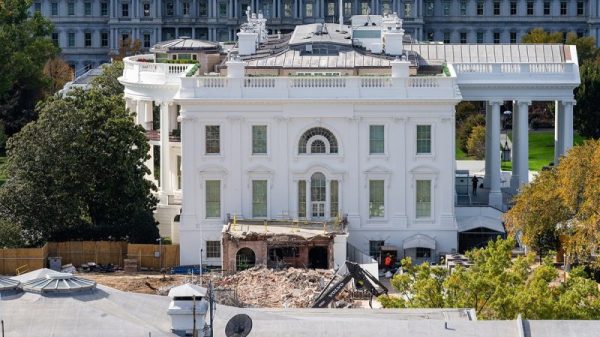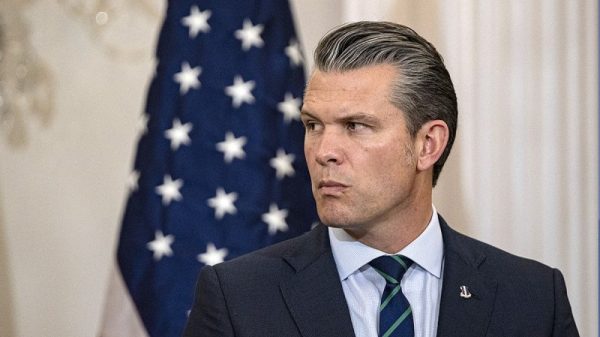What if there were some political tool that many US Presidents (going back to Grant, and all of them, including both leading major-party candidates this year) at least since Nixon, have wanted? What if they also agreed with Nixon that the result would be reduced political pork? Would such bipartisan agreement mean that the tool in question would advance what the Constitution called the “General Welfare”?
That tool is the line-item veto, which allows the President to “cancel specific parts of a bill (usually spending provisions) while signing into law the rest of the bill.” It sounds attractive, as it appears to target special-interest legislation at odds with both the Constitution and common sense. But when Presidents, who have demonstrated more interest in steering wasteful spending to their friends than in eliminating it, have made that same argument, the conclusion must be questioned. In fact, if we follow Thomas Sowell’s advice about “Thinking Beyond Stage One,” the opposite might very well be the case.
One impediment today is that when the Republican’s 1994 Contract With America, as part of its reform agenda, gave line-item veto powers to President Clinton who then used it 82 times, it was ruled an unconstitutional violation of separation of powers by the US Supreme Court.
With no chance, given our current political divide, of passing a Constitutional Amendment to enable a presidential line-item veto, why do those seeking to look like “good government” presidential material tout it? They would like to project the image of being the “adult in the room,” representing all Americans rather than advancing special interests against all other Americans’ interests.
The story might not be termed “draining the swamp” by everyone, but that Trumpian phrase does capture the imagery of imposing fiscal discipline on irresponsible legislators and regulators by reining in wasteful and abusive policies.
The central idea in that story is that the line-item veto would take away the ability of those in Congress to enforce their logrolling, favor-trading agreements. The President would be able to eliminate the legislative payoff to any party to a logrolling “contract.” Unable to count on receiving the special benefits a bill promised them because the President might choose to veto that part, the creators of such deals would be discouraged.
While that story sounds appealing to those who see our government legislating in many areas it should not, that is not the only, or necessarily the most likely, result. A presidential line-item veto could also be used to grow government even more.
While it could reduce congressional pork, it would increase presidential pork. The President would become the only ultimate enforcer of congressional fiscal negotiations, and so would have not only to be included in every logrolling agreement, but at its center. That would provide him with vastly increased legislative leverage, and that could just as easily grow government as shrink it.
Using the seeming “government shrinkage tool” of a line-item veto to expand government simply requires the President to threaten carefully targeted item vetoes, unless particular members of Congress voted for his desired legislation. He could make every individual item in every bill that benefited any recalcitrant legislator disappear at his sole discretion unless he was given what he wanted. And that would expand the government whenever what the President wanted was “more.”
The main story being told around the line-item veto focuses on congressional special interests. But Presidents have plenty of special interests, too, and those can involve far more zeroes than what those in Congress propose. They want to help swing constituencies to buy them over to their side (as with President Biden’s efforts to bribe those with college debts to his side of the aisle). They want to help large states that will be competitive in the Electoral College and they want as much of the cost as possible to be borne by those who will vote the other way. They want to help “at risk” candidates from their party and punish similarly situated opponents. They want more influence over their own party as well. And every President has personal spending priorities too, such as, say, building or tearing down a wall, or forcibly transforming energy production and use in America.
The power of a line-item veto to expand government has long been recognized. In 1996, on “This Week With David Brinkley,” Al Gore (echoed by other administration officials) said then-President Clinton would use the added bargaining power conferred by a line-item veto (not yet held unconstitutional) to restore benefits he didn’t want cut by the historic welfare reform bill that was being forced on him after two vetoes.
A line-item veto would not only tip power from Congress toward the President, it could all but eviscerate the power of congressional minorities when they are not of the same party as the President. When the President belongs to the congressional minority party, that party would have far more power over legislation. But if the President’s party had a congressional majority, a line-item veto could almost eliminate any minority-party power. The minority’s power to advance their agenda is to make legislative deals in exchange for support of strongly favored policies. But their part of any such deals could always be deleted by the President after the fact. And the minority would certainly not be able to mount a successful veto override in such a case.
A further issue is what would happen to the incentives of lame-duck presidents. Without the check of future electoral punishment in play for their re-election, a line-item veto would give lame ducks more power to impose their special interests on the country as they go out the door.
Given that forty-four states give their governors some form of line-item veto, while six do not, we can use the states as what Justice Louis Brandeis termed “laboratories of democracy” to inform our judgments about whether a line-item veto would actually contract the size of government. Burton Abrams and William Dougan did such a comparison, controlling for other variables, and found that a line-item veto did not reduce state spending.
So what would a presidential line-item veto give us, beyond more power to the executive branch, which has already grown to eclipse the legislative power designed by America’s founders? Would it give us better government? I think that the line-item veto follies over the years in Wisconsin, where governors have been able to delete words, numbers, and even sentences, are instructive on this point.
In 1973 Governor Patrick Lucey deleted the 2 from a $25 million appropriation, turning it into $5 million. In 1975, he removed the “not” from “not less than 50 percent,” reversing the legislators’ intent on a bill. In 1983, Governor Anthony Earl reworked a 121-word paragraph into a 22-word paragraph which shifted the venue of an appeals process. In 1993, Governor Tommy Thompson deleted budget numbers and substituted lower budget numbers. Such examples are more useful for a comedy routine about government failure and irrationality than for showing how a line-item veto allows government to better advance citizens’ well-being.
Supporting a line-item veto may appear to demonstrate a politician’s fiscal prudence bona fides. But it can, and may even be more likely to, indicate the opposite. Good government is not producible by such a rearrangement of the power Washington has arrogated to itself over Americans, despite having no authorization from our Constitution. In fact, given the large number of times “no” and “not” are used in that document, just imagine how someone’s line-item veto pen could dramatically transform our supposed “highest law of the land” by reducing its “negativity.” Look at, say, the first half of the Bill of Rights, from that perspective, and you will have a good guide to whether a line-item veto is a path to better government.




































